#Be 68
Explore tagged Tumblr posts
Text
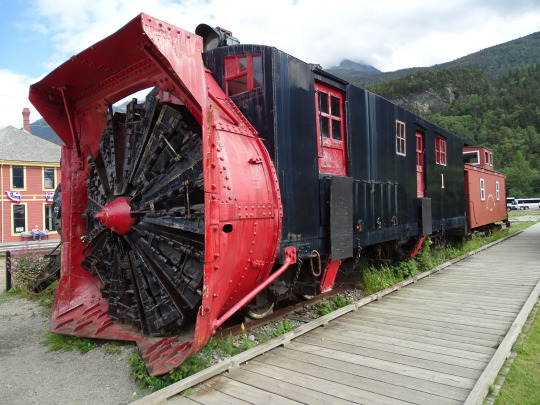
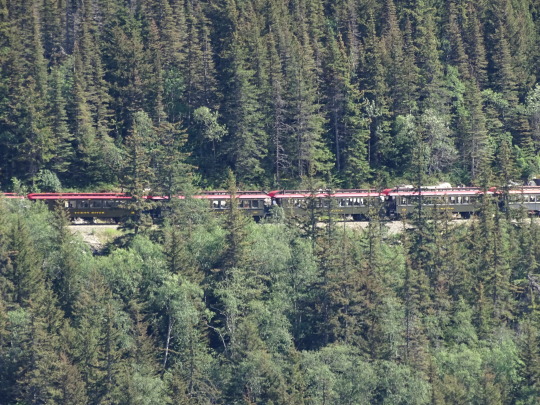

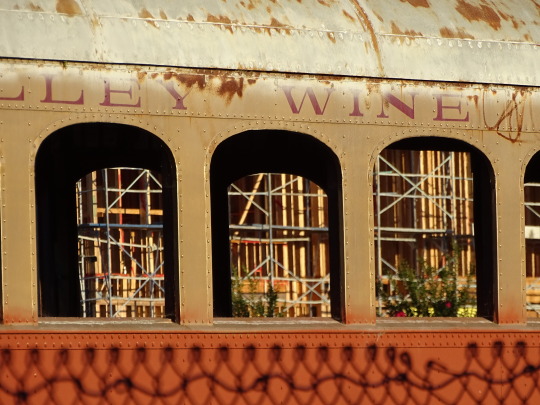
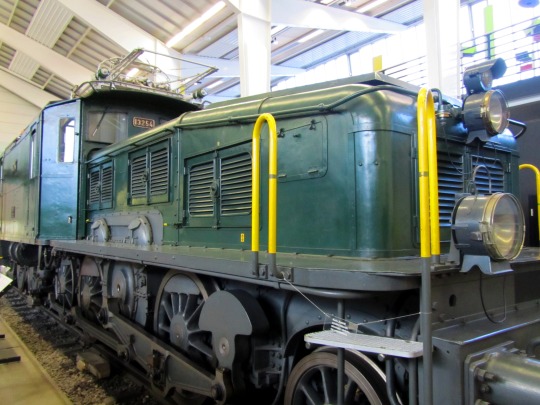

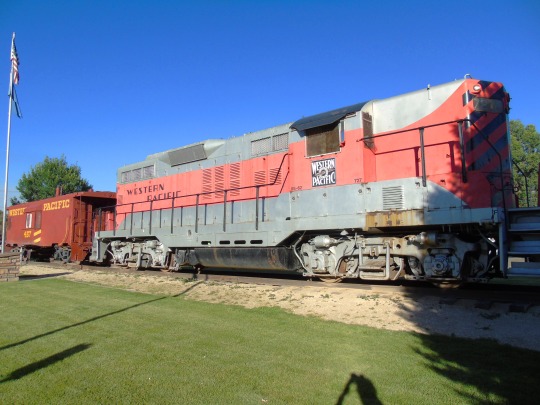

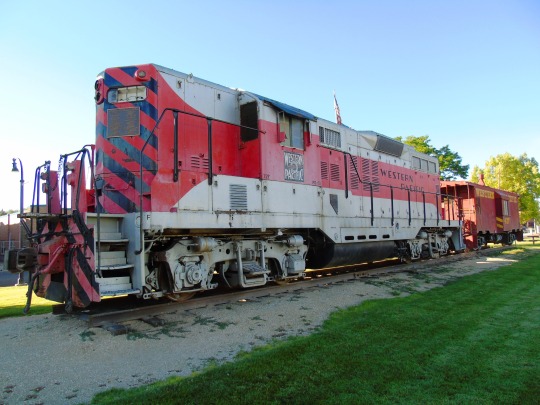



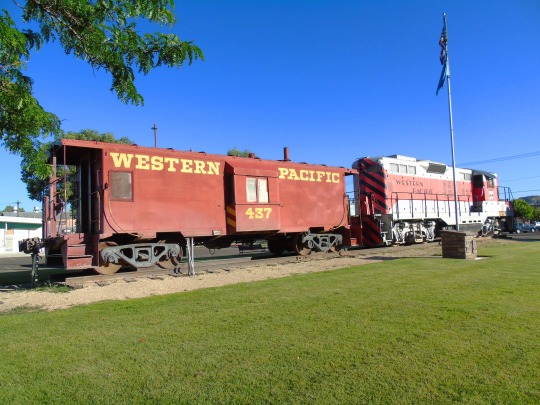
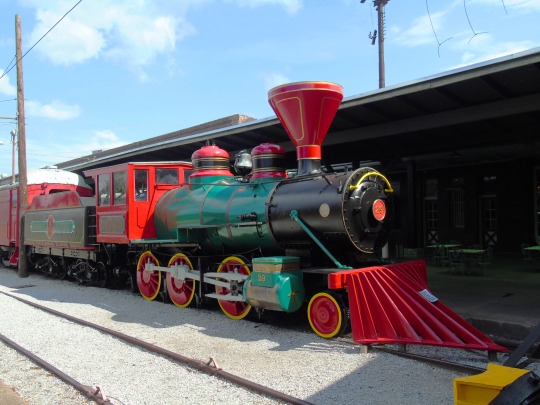



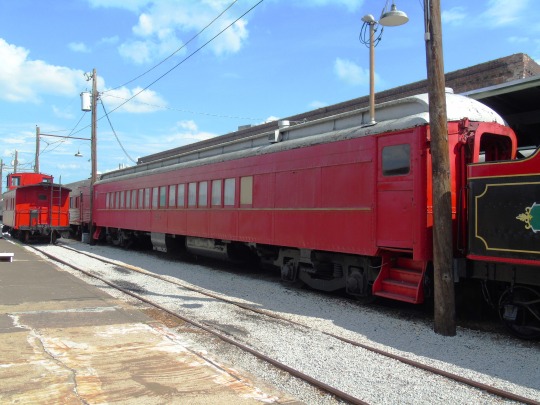

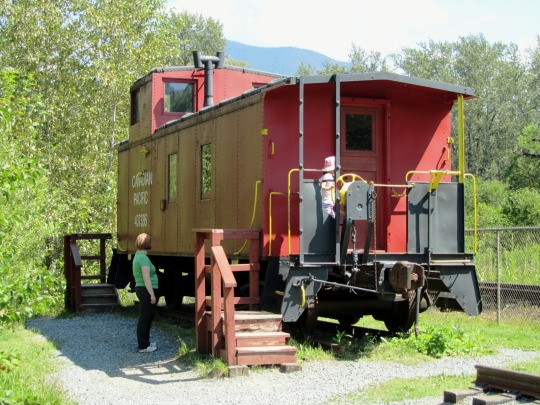

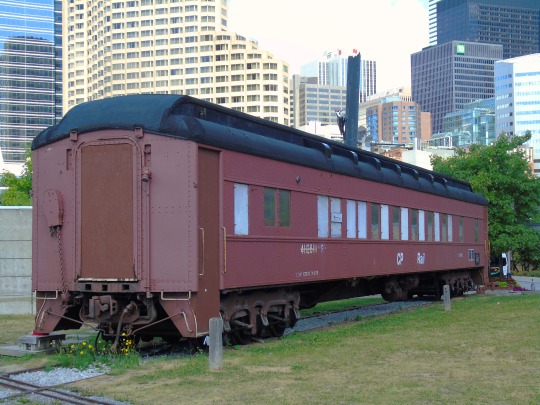
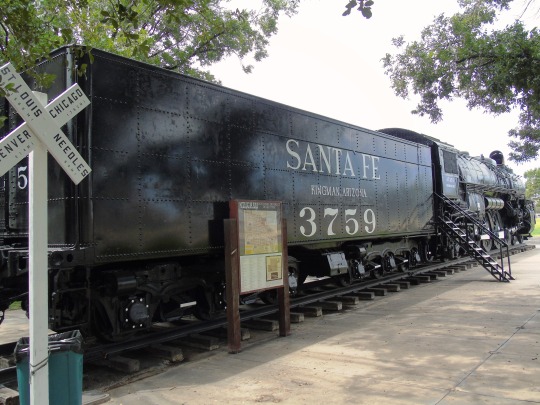
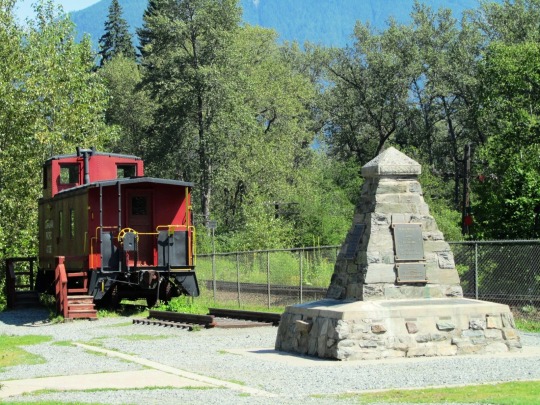
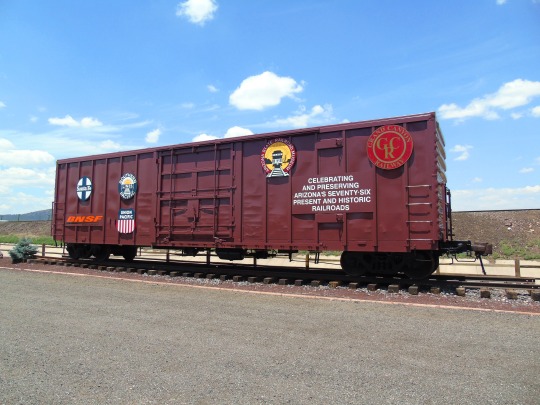
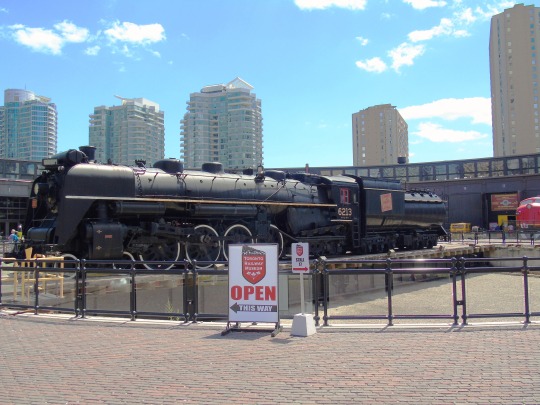


National Train Day
Go out and take a ride on a train, or watch them go by from a comfortable vantage point, whether fast, sleek commuter trains or large, loud steam engine transporters.
They cross thousands of miles across the countryside all over the world, transporting goods and passengers to places far-flung, and bringing back the same to their point of origin.
Two gleaming lines of silver lay their path as they move through cities and forests, mountains, and plains to bring everything to those who need it, whether it’s cargo or people. Of course, we’re talking about trains, those powerful machines that inspired so much of history, and have done amazing things for economies and industry all over the world.
National Train Day commemorates these beautiful machines and the role they play in our lives.
History of National Train Day
The history of National Train Day is the history of trains, and that history goes back farther than you might suspect. Railroads were actually a progression from wagonways, which were essentially railroads powered by horses, and have a history going back over 2000 years.
The first example of what we might call a “train track” emerged near Corinth in Ancient Greece in around 600 BC. Men and animals would pull boats along grooves in limestone across a five-mile course to their destination in the sea. The Romans did something similar in Roman Egypt.
The reason wagonways (and of course railways) came into existence was one of pure practicality: you could transport larger loads over a greater distance with prepared paths!
The first modern ‘ways’ weren’t even created with metal rails, they were instead created with wooden rails, and in the distance path even cut-stone tracks. By being carefully prepared, you could increase the amount a single horse could haul from one ton to nearly 13 tons! That’s a considerable improvement in cargo capacity and a massive boon to those who have to move a lot of it a good distance.
Of course, with wooden rails, they had to be often replaced, and so it became common practice to cover them with a thin metal plate to help the wood last.
The industrial revolution changed all that, and metal rails became more prominent. Around 1750, industry began producing dramatically more iron than at any point in the past. New techniques made possible by the modern science of metallurgy and engineering created the conditions for an output explosion.
With increased supply, the price of tracks began to fall. It suddenly became feasible to lay more of them, replacing the problem-stricken wooden versions that tended to break often.
There was still a problem, though: some consignments had a nasty habit of veering off the rails – literally! In response, an industrial innovator and colliery manager called John Curr saw that the problem was flat wheels. He realized that you needed some way to keep the wagon on the line. His idea was to create an L-shaped profile to the wheel on the inside that would prevent it from slipping off the track.
Of course, none of this early development mentions steam-powered locomotives – the thing that people think about first when they talk about trains. The actual steam engine only emerged in 1769 following James Watt’s proof-of-concept. But even he didn’t see the potential. He wanted to use steam to power wheels in factories, not necessarily trains.
It took more than thirty years for the first fully functional steam locomotive to appear in 1804 under the direction of Richard Trevithick. Trevithick, however, didn’t manage to commercialize the idea. While he built plenty of demonstrations, he didn’t have the means to put it to good use. Thus, the first commercial train journeys only began in 1812, and on a tiny scale.
But, of course, we all know what happened next: trains took over the world. They gave birth to our modern, productive civilization and transformed the life of the average person forever.
Because trains played a big part in our collective history, it was only a matter of time before someone, somewhere developed the idea of hosting a “train day.” An event like this would be a chance for everyone in the world who has benefited from locomotives to celebrate their valuable role, choo-chooing humanity into the future.
In 2008, Amtrak established National Train Day to help celebrate the history of the locomotive. The idea was to engage the general public more on the subject of trains and their history in the development of the modern world. National Train Day was a homage to the efforts of our ancestors in building out the rail network. It focuses, particularly on the transcontinental railway. During its heyday, National Train Day was a major event. While Amtrak was the clear lead, museums and other institutions related to trains all took part. Even charities got involved, seeing it as an excellent opportunity to fundraise.
Amtrak decided to host events every year, but, unfortunately, got into financial trouble. The firm closed its official National Train Day in 2015. That, however, wasn’t the end of the matter. Enthusiasts loved it so much, they carried on celebrating the occasion in the years that followed.
How to celebrate National Train Day
The best way to celebrate National Train Day is to go out and take a ride on a train! It doesn’t matter where it’s going, riding a train can be a fantastic and relaxing experience.
Some towns have steam trains that are part of their history and still in operation, and dinner trains are always a nice experience. Or, if you’re planning on taking a trip, rather than taking a car or plane, take a train for a relaxing ride across the country. National Train Day is a great chance to go out and see the world and experience these amazing vehicles.
Source
#Skagway#Alaska#National Train Day#NationalTrainDay#second Saturday in May#11 May 2024#Toronto Railway Museum#original photography#summer vacation#USA#Canada#Napa Valley Wine Train#Elko Railroad Park#Krokodil#Be 68#Dampflok C 56 Elefant#Chattanooga Choo Choo#Switzerland#Verkehrshaus der Schweiz#Swiss Transport Museum#The Last Spike#Kingman#I really love the last pic
2 notes
·
View notes
Text
#America#great britain#ac#air conditioning#Cultural differences persnaps#Personally I set my thermostat to 68 degrees all year round
14K notes
·
View notes
Text

started watching one piece!
#my art#one piece#monkey d luffy#luffy#zoro roronoa#roronoa zoro#one piece nami#nami op#vinsmoke sanji#black leg sanji#no spoilers im still on like. epi 68 :(#im having fun though. my faves rn are nami and zoro.#who are so funny togethger. mlm wlw hostility.#usopp
6K notes
·
View notes
Text



he makes me so sad. look at his sweet face
3K notes
·
View notes
Text
There are good things in this world still
Today, Bug asked for neck and face rubs by touching my hand gently with her beak.
Today, her neck feathers were indescribably soft and silky.
Today, she is sitting warm and safe and happy on my leg, sound asleep.
There are good things left in this world, however small. This is your opportunity to reblog this and share your good things with each other, or check the notes if you need a reminder.
#bug the peahen#peafowl#peahens#good things#Today is day 68#there are 1453 days left#we can make it that long together#I'm sorry these haven't been daily#I just forget to reflect sometimes
1K notes
·
View notes
Text






Chip Taylor in 68 Kill (2017)
#vixs gifs#500#1000#1500#2000#matthew gray gubler#mgg#mgg pics#matthew gray gubler gifs#mgg gifs#68 kill#chip taylor#chip taylor gifs#criminal minds#spencer reid#dr spencer reid#doctor spencer reid#gif#gifs#gifset#my gifs#movie gifs#film gifs
3K notes
·
View notes
Text

3K notes
·
View notes
Text

2K notes
·
View notes
Text















CHANGBIN SKZ CODE EP.68
#stray kids#seo changbin#changbin#bystay#staydaily#skzco#usersun#userbeepls#usersa#userlau#jennalook#majatual#userbinsuns#mimotag#usersemily#mel.psd#m: stray kids#skz code#skz code ep.68
664 notes
·
View notes
Text





mgg as chip taylor (68 kill 2017) will forever be on my mind
#68 kill#chip taylor#matthew gray gubler#mgg#spencer reid fanfiction#spencer reid x reader#spencer reid smut#dr spencer reid#spencer reid#criminal minds#hes so babygirl#my man my man my man
2K notes
·
View notes
Text

philo's most wanted [🐦⬛]
#sylus#love and deepspace#love and deepspace sylus#lads sylus#lads fanart#lads#mydrawings#he's such a dreamboat#i was trying to put him in a tommy shelby outfit#a flat cap would've completed the look but i didn't want to hide his beautiful hair#anyways i can't wait for his bday!!!!#i have 68 wishes saved up so far and it'll be guaranteed i just hope he loves me enough to come home early
411 notes
·
View notes
Text





Matthew gray gubler in 68 kill (2017)
548 notes
·
View notes
Text










CHIPPPP 😩
1K notes
·
View notes
Text
Exploring all of the main Yellowjackets ships (and what makes each of them so compelling)
In honor of everyone fighting about which ship is the best in this fandom, I wanted to do a rundown of each of the main Yellowjackets ships and why they are all so interesting and believable in their own ways. I am only going over the most popular ships in the fandom (romantic pairings with more than 100 written works on ao3), so sorry if some of your favorite rarepairs are missing! And if you’re looking for a post all about how these relationships are so cute and healthy, this isn’t it (except for maybe Taivan). I’m mostly going to talk about how toxic, tragic, and tumultuous they all are, because that’s what we’re actually here for.
Jackieshauna


Jackieshauna is all about possession (in the best, most homoerotically intense way). Their dynamic is fraught with contradictory feelings that somehow exist alongside each other. Shauna idolizes Jackie’s magnetic influence, but she is also deeply resentful of her. Shauna adores Jackie, but she’s also suffocated by her. She feels like can’t live without Jackie, but she also can’t stand living in her shadow anymore. Jackie cares deeply for Shauna, but she also needs to own her; she needs to be validated by her position of power over Shauna.
The queer subtext in their relationship is so strong that it almost doesn’t feel like subtext at all. From the longing stares and the constant, almost hypnotic closeness to the way they interact with each other, the line between platonic love and romantic obsession blurs to the point of becoming indistinguishable. Their entire dynamic reads like a suppressed, unspoken desire, with both women using Jeff (and Travis eventually) as a way of redirecting their intense feelings towards each other. Shauna’s betrayal with Jeff doesn’t just feel like a “best friend stole my boyfriend” situation—it feels like she wanted to be Jackie, to consume her, to get as close to her as possible. And Jackie’s reaction isn’t just about the betrayal; it’s about the fact that Shauna was hers, and suddenly, she’s not. Jackie is so devastated by the knowledge of Shauna sleeping with Jeff that she no longer believes in love and loses her will to live entirely.
Shauna’s grief over Jackie isn’t just guilt; it’s, once again, possession. She talks to Jackie’s frozen corpse, hallucinates their conversations, braids her hair, does her makeup, eats her ear. It’s as if, in death, Jackie becomes more hers than she ever was in life. I just can’t get enough of the line, “I don’t know where you end and I begin.” Shauna eating Jackie is the ultimate culmination of this. It’s an act of worship—taking Jackie into herself, keeping her close in the most visceral way possible. But it’s also an act of domination—Shauna, who spent so long being beneath Jackie, is now consuming her, overpowering her in a way she never could while Jackie was alive.
There are so many layers to Jackieshauna; it’s love, admiration, obsession, ownership, codependency, resentment, and jealousy all wrapped up into one severely intense relationship. Their story is so tragic because it’s full of unspoken things—words that were never said, feelings that were never acknowledged, and a love that was never fully realized until it was too late.
One word to describe them: Possession
Their best scene: Their last fight

"Did I force you to live in my shadow, Shauna? It must be hard being this jealous all the time. You're so fucking jealous of me you can barely breathe."
“Are you quoting Beaches at me right now?”
“No…”
"I'm not jealous of you, Jackie. I feel sorry for you. Because you're weak. And I think that deep down, you know it. I’m sure everyone at home is so fucking sad to be losing their perfect little princess, but they’ll never know how tragic and boring and insecure you really are, or how high school was the best your life was ever gonna get.”
Taivan


Taivan is a peak golden retriever/black cat ship. Van is the golden retriever: loyal, endlessly optimistic (even in the face of getting nearly fatally attacked by wolves), and always trying to bring humor and lightness to situations, even when things are at their worst. She’s playful, affectionate, and follows Taissa around with unwavering devotion, even when Taissa is pushing her away or making choices that Van doesn’t agree with. This loyalty extends to Taissa’s sleepwalking, as Van’s support of her never falters even when faced with a darker, more dangerous side of Tai.
Taissa, on the other hand, is the ultimate black cat: fiercely independent, emotionally guarded, and always trying to maintain control, even when she’s clearly struggling. She’s skeptical, calculated, and reluctant to accept things that don’t fit her worldview. This initially translates into her relationship with Van, as she doesn’t want to be vulnerable, but you can tell she feels such a deep love for Van that keeps drawing her back in; unable to hide this softer side of herself. Van softens Taissa in the best way, cracking open that hard shell and allowing Taissa’s vulnerability and warmth to reveal itself. The most telling moment of this is Taissa’s willingness to enter Lottie’s spiritual circle to support Van. For someone as practical, skeptical, and grounded as Taissa, this is a significant sacrifice of her usual hard-edged pragmatism. But her desire to be there for Van, to show up in a way that is vulnerable and supportive, speaks volumes about the way Van has brought out a warmth in her that no one else ever could. Taissa’s love for Van is not just a passive emotion—it’s an active, deliberate decision to let go of control. The fact that she does this for Van is a testament to just how deeply she cares. And the Doomcoming “I want to see you” scene? That girl loves Van with her entire being.
In the adult timeline, Tai and Van cope with what happened in the wilderness in opposite ways. Taissa obsessively looks to the future and refuses to look back, while Van remains stuck in the past, refusing to move on. When they reunite in Season 2, they’re able to meet somewhere in the middle; a collision of the past and present.
It is clear that these two will do anything for each other, whether it’s fighting off a pack of wolves, tying themselves to each other at night, or going on life-threatening expeditions just to support each other. They are devoted to each other in any form. I can't wait to see them fuck on a table in the adult timeline in S3.
One word to describe them: Devotion
Their best scene: I ❤️ you (in blood)

“This is how you’re choosing to say ‘I love you’ for the first time?”
“You’re kind of leaving me hanging here, lady…”
“I love you, too.”
Lottienat


Lottie and Nat are classic narrative foils. They contrast so sharply with one another, yet in those very contrasts lie hidden similarities that shape their dynamic. Natalie was raised in a trailer park while Lottie was raised in a mansion, but they both grew up lonely and neglected by the people who are supposed to love them. Both of them feel alone and unloved, but where Natalie learns to toughen up and rely solely on herself, Lottie begins to seek connection in something bigger than herself—spirituality and the Wilderness. Natalie is the pragmatist/skeptic while Lottie is the spiritual prophet, but they both want what's best for the group. Lottie and Nat are arguably the two most compassionate, empathetic survivors, but they wield this empathy in different ways (i.e. Lottie offering Travis hope that his brother is alive, Natalie offering support through the grieving process as she guides him towards accepting his brother is dead). Together, they are two halves of a whole, each offering something the other cannot.
Lottie is both Nat's salvation and her undoing. Lottie offers Natalie the hope, purpose, and sense of belonging that she so desperately craves in her lowest moments, but in doing so, she inadvertently sets in motion a chain of events that ultimately leads to Natalie’s emotional and physical destruction. When Natalie is more alone and outcasted than she has ever been in the wilderness after the card draw, Lottie grants her the title of the group’s new leader. With this new title, Nat finally receives the love and appreciation she has always needed, but she also receives the burden of being in charge of (and therefore responsible for the actions of) a group rapidly descending into darkness, only intensifying the guilt and trauma she lives with for the rest of her life. When Natalie is on the verge of suicide, Lottie rescues her and takes her to her wellness community, which leads to Nat discovering self-forgiveness but also places her on the path towards her untimely death.
Their dynamic is defined by Lottie reaching out, trying to hold Natalie, to nurture and protect her, while Natalie fights and resists. The hypnosis/sharing shack scene is so important. It's Nat finally surrendering to Lottie (and all that Lottie represents). It's Nat allowing herself to be held (thinking of the way she lays her head in Lottie's lap, and the way she and Lottie are embracing each other as they dance around the fire), to be vulnerable and receive the love and care she never thought she deserved. It's so tragic that Lottie begins to spiral again just as Nat is beginning to trust her.
There are so many great Lottienat moments: the hint of pre-crash banter in "You don't talk shit unless someone really deserves it", Natalie comforting Lottie in the middle of the night when they sleep in the cabin for the first time, "Did you read that on a fucking fortune cookie?", Lottie always offering Nat her blood, Lottie's "I just want you to be safe", the iconic bathtub truce scene, the coronation scene with Lottie kissing Nat's hand and Nat looking up at her with awe and tears in her eyes, Lottie keeping tabs on Nat over the years to make sure she's okay, kidnapping her before she could kill herself, Natalie regressing to her teen self in the sharing shack as she rests her head on Lottie's lap, Natalie's "I think it's time for you to stop resisting", and Lottie and Nat dancing together around the fire.
One word to describe them: Tension
Their best scene: The bathtub scene

"Good game, you fucking loser."
"You talking shit? You little bitch, you ended up with nil, the same as me. But fine, good game."
Lottielee

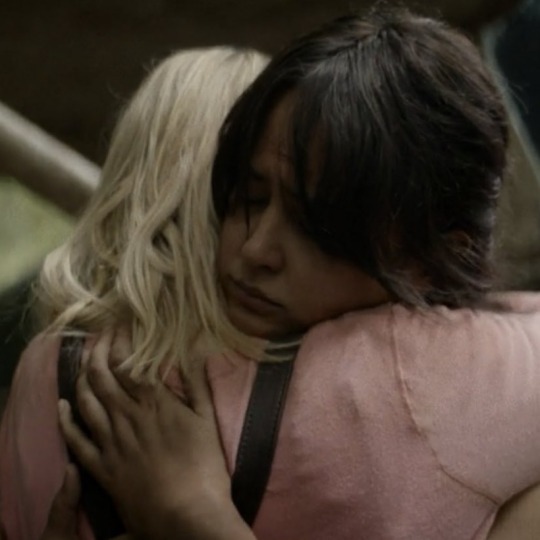
So much of Lottie’s life leading up to the plane crash was about shame and self-confinement. Her father made her afraid of her own mind, and she spent much of her youth suppressing herself through medications and a socially acceptable mask. Laura Lee is the first person to accept Lottie as she truly is. She’s the first person to offer Lottie an alternative to her father’s control. Where Lottie has only known repression and self-doubt, Laura Lee provides a safe space where Lottie is believed. Not only does Laura Lee offer Lottie validation—she offers her a sanctuary for expression. She’s not afraid of Lottie’s abilities or her spirituality; she sees it as a part of who Lottie is, something to be embraced rather than suppressed. Lottie’s relationship with Laura Lee is foundational to her entire character; her psyche, her self-identity, her motivations going forward, and her path in life. Laura Lee helps Lottie develop an assertiveness and confidence she had not been able to access before, which in turn allows her to ascend to the extremely influential figure she ends up becoming.
I think so much can be said about the importance of touch in their relationship. Holding each other’s hands to guide each other, embracing each other, placing a hand on the other’s chest and holding it there. Laura Lee provides a gentleness/tenderness in her touch that Lottie has been craving her whole life. The act of placing a hand on the chest is particularly significant. When Laura Lee touches Lottie in this way, it is a moment of emotional anchoring. The chest is where the heart is, where one’s truest self can be felt and expressed. To have someone touch you there with reverence is a profound act of acceptance and recognition. And this is something that stays with Lottie, becoming an integral part of her spiritual practices. When Lottie offers this kind of touch to others, she’s not just comforting them; she’s offering the same acceptance and safety that she first received from Laura Lee. It’s a form of healing, of passing on the love and belief that Laura Lee gave her, a way for Lottie to channel her strength into others and to demonstrate the kind of acceptance she once craved.
Lottielee is about nurturance and sustenance. I love the absolute awe on their faces when they look at each other. In a way, they have faith in and worship each other.
Laura Lee’s death is extremely impactful and devastating to Lottie, so much so that she still sees Laura Lee’s ghost even 25 years later. Echoes of Laura Lee exist in everything Lottie does.
One word to describe them: Acceptance
Their best scene: The lake baptism

"I saw fire— a light."
"That's the holy spirit, you've been touched."
Mistynat


This ship has got to be the most hilarious out of any on the show. On paper, it makes absolutely no sense. Natalie is dark, brooding, cynical, and emotionally guarded to the point of being downright cold in the adult timeline. She has carefully curated an emotional armor; an air of detachment and apathy that she uses to maintain distance from anyone that could possibly become close to her. In contrast, Misty is a perpetual ray of sunshine—a walking bundle of overzealous energy and bubbly optimism wrapped in frilly, vintage-inspired cat sweaters. She's needy, socially unaware, and often acts out of a desperate desire for affection and validation. Their personalities, seemingly at odds, create a rich, almost absurd juxtaposition that makes their interactions fascinating to watch.
At the heart of their relationship is a shared sense of longing. Both Natalie and Misty crave connection and appreciation, but they have no idea how to foster it in healthy, meaningful ways. Both of them have been deeply isolated throughout their lives, though for different reasons. Natalie’s isolation stems from her trauma. She doesn't feel worthy of love and she's afraid of hurting people, so she keeps everyone at arm’s length, often sabotaging any potential for intimacy. Misty, on the other hand, is isolated by her intense neediness and socially awkward tendencies. She becomes overbearing and obsessive, constantly seeking affection in ways that alienate others. This creates such an interesting dynamic when the two are together, as Misty is obsessively pouring all of her loyalty and energy into Nat, while Nat is constantly pushing her away and struggling to maintain a safe distance between them.
While Mistynat is definitely stronger on Misty's end than Nat's, I think you can see the soft spot Nat has for Misty. Nat is begrudgingly charmed by her. Christina Ricci has said that she thinks Natalie was the only one to show any kindness towards Misty growing up, and I couldn't agree more. There are moments when Natalie shows a surprising level of affection and understanding toward Misty, even if it's fleeting or passive. Nat protects Misty from Shauna after Shauna punches her ("It's not her fault! Misty did everything she could!"), she appears genuinely happy to see Misty at the reunion, and the line "We're all like this, aren't we?" is Nat realizing how alike she and Misty are; how they share the same trauma.
It is so heartbreaking that Misty, who saw herself as Nat's greatest protector and most loyal follower, was ultimately the one to kill her. And it will also be so heartbreaking to see Misty's obsession with Nat extend to her wearing Nat's clothing and taking on her persona in Season 3 as a way of remaining close to her. Here's to seeing more of them in the teen timeline this season!
One word to describe them: Unpredictable
Their best scene: Misty snorting Nat’s coke

"Misty! Get off my coke! Oh my god you're possessed!"
Lottieshauna


Lottie is the only one to truly understand and embrace Shauna (even the darkest, most suppressed parts of herself). While she has other close relationships on the show, they all accept only a portion of Shauna (the portion they’re comfortable with, the portion that doesn’t feel dangerous, the portion that Shauna displays to others because she knows it won’t scare them away). Jeff, Jackie, and even Taissa can’t fully comprehend the depth of Shauna’s rage, the thrill she gets from danger, her desperate need to be seen, or the fact that she wants an outlet for the violent impulses she keeps buried. But with Lottie, Shauna can be her full, unfiltered self.
Lottie doesn’t just accept Shauna’s darkness—she encourages it. She doesn’t flinch from the things that would make others recoil. When Shauna is discovered to be talking to Jackie’s corpse in the meat shed, Lottie is the only one to extend empathy and understanding to Shauna. She covers up the piece cut out of Jackie’s arm and gives Shauna Jackie’s necklace because she knows that it’s what Shauna needs. After the death of Shauna’s baby, Lottie risks her life to allow Shauna to take her rage (and her intense grief) out on her. In the adult timeline, Lottie’s goat trust exercise (not sure what else to call it lol) is what makes Shauna realize how she has been keeping the people she loves at arm’s length; and it is what lays the groundwork for true healing. Lottie always understands what Shauna needs.
Shauna initially resists Lottie’s influence, but as the story progresses, you can see her slowly being drawn in to her web. I think there’s something thrilling for Shauna to be seen and accepted for her true self (instead of all of the masks she puts on to be what others want her to be). Their connection is one of shared experience, unspoken understanding, and the potential for something both destructive and healing.
One word to describe them: Cathartic
Their best scene: The beatdown

"Shauna, I know there's a lot of pain right now, but let it out. Shauna, we need you, let it out."
Travnat


There’s only room for one heterosexual ship on this list, and that is undoubtedly going to be Natalie and Travis. Travnat is tragic, toxic, and narratively doomed in all of the best ways. Travis and Natalie are two people who cannot help but destroy themselves and each other. Nat and Travis are birds of a feather, which means they have a deep understanding of each other (an understanding they have never received from anyone else), but it also means they have a mutual capacity for self-destruction.
When Travis lashes out after his father’s death, Natalie sees herself. She recognizes that rage, that despair. It’s something that no one else in the group can fully understand or sympathize with, because they haven’t been through the same kind of loss and alienation. But Natalie does understand, and she is the only one who offers him any kind of empathy or care initially. Even when Travis resists, when he pushes her away, she remains steadfast, because, deep down, she knows exactly what it feels like to be abandoned in your pain, to have no one who understands the depth of your grief. It’s this shared history of suffering that makes their connection so strong, yet so toxic. It’s not just about comfort—it’s about two people who have never been allowed to heal properly, and who are only capable of hurting each other as a result. They have the same coping methods: numbing and distraction (whether that be through drugs, sex, or reckless behavior), which causes them to spiral and relapse into their old habits whenever they reconnect.
Natalie describes Travis as "my best friend, the only person I ever loved, the only person who ever really knew me." There is no denying that these two have a deep love for each other. In their light, playful moments in Season 1, you can see what might have been if they had connected before the plane crash. But now they have gone through so much of the same trauma that there is no way for them to be around each other without reminding each other of their shared pain. Nat is a constant reminder to Travis of the loss of his little brother, and Travis is a constant reminder to Nat of the intense guilt of what she did to survive out there. Despite this, they attempt to take care of each other over the course of 25 years. There’s a tragic dance between them: they push each other away, only to pull each other back in, over and over again. The more they try to heal each other, the more they wound one another, and this constant tug-of-war between love and destruction is what makes their relationship so compelling.
One word to describe them: Trauma-bond
Their best scene: Post-Doomcoming hug

"I'm so sorry, I didn't want to. I fucking love you, Natalie."
Jackienat


On an outward, surface level, Natalie and Jackie are polar opposites. Jackie is the classic queen bee—privileged, popular, and used to being admired. Natalie, on the other hand, is the rebellious outcast, rough around the edges and unwilling to conform. The ‘queen bee’ and the ‘burnout’. The ‘prude’ and the ‘slut’. Jackie cares too much, Natalie doesn’t care enough. But, in actuality, these are the cliche labels that have been placed on them/assigned to them by external sources. These are the false fronts they put on to hide the vulnerability underneath. Nat and Jackie are actually much more similar than either of them would probably care to admit.
At the core of their conflicts is jealousy. Jackie envies Natalie's ability to be carefree and unapologetically herself (you can hear genuine admiration in her compliment to Nat, “I love that you don’t care what anyone else thinks. You are so completely yourself). Jackie, for all her outward confidence, is constantly performing the version of herself that others expect, and she longs for the kind of authenticity that Natalie seems to embody. On the other hand, Natalie is jealous of the life Jackie represents—privilege, stability, being adored without having to fight for it. But they’re both deeply insecure in ways that mirror each other. Jackie isn’t as effortlessly perfect as everyone believes, and Natalie isn’t as indifferent as she pretends to be. They are both trapped by expectations, and neither of them truly feels like they belong.
If circumstances had been different, I think they would have actually been very close. Their humor is actually similar—sharp, a little sarcastic, but often disarming. They’re both sarcastic, raspy-voiced little shits and I would have loved to see them play off of each other a little more. My personal headcanon for these two is that they actually used to be very close friends when they were little but grew apart in middle school/high school due to societal expectations. Maybe Jackie used to be more carefree before she learned she had to be perfect, and maybe Natalie used to be softer before she learned no one would protect her. There was no huge falling out, they were just gradually pulled apart over time, placed into their respective roles, and now there’s a part of both of them that quietly misses the other but also feels like the version of themselves that once connected with each other is gone. They just don’t understand each other anymore.
And Nat being the one to lay Jackie’s bones to rest? Rejecting Travis’ offer to come with her so that she could have a moment alone with Jackie to pay her respects, release her jealousy, and apologize? Nat being the one to take Jackie’s position of leadership in the group (the queen bee) after she’s gone? Tragic.
They are the perfect enemies to lovers trope (or, in my opinion, friends to enemies to lovers) that unfortunately will never come to fruition.
One word to describe them: Jealousy
Their best scene: Nat apologizes to Jackie's bones

"You're lucky, you know? I think shit is going to get a lot worse out here. But you're already dead so, way to make everyone jealous of you one last time. I'm sorry, for what we did. Who knows, maybe you could be the reason we survive the winter, so thanks. Rest in peace, Jackie."
—
And if you’re interested, the most-written romantic pairings on ao3 at the time of making this post are as follows: Shauna Shipman/Jackie Taylor (1,564 works), Lottie Matthews/Natalie Scatorccio (1,202 works), Van Palmer/Taissa Turner (1,019 works), Laura Lee/Lottie Matthews (396 works), Misty Quigley/Natalie Scatorccio (258 works), Natalie Scatorccio/Jackie Taylor (185 works), Lottie Matthews/Shauna Shipman (182 works), and Travis Martinez/Natalie Scatorccio (120 works).
#I am heartbroken to leave Shaunanat (Shaunat? Shat?) out of this list but they only have 68 works ao3#I’m sure that number is going to skyrocket after S3#I tried to be unbiased but i just couldnt help but write a whole book about lottienat#yellowjackets#lottienat#mistynat#jackieshauna#Taivan#Lottielee#Travnat#lottieshauna#lottielee
380 notes
·
View notes
Text
I wanna, uh, him in the back of his mom's Mercury | Chip Taylor

Summary: I wanna uh him in the back of his mom's Mercury; Chip and fem!reader have car sex (in her mother's car). that's it.
Category: Smut (MDNI),
Warnings: Fingering, P in V unprotected sex, pulling out, oral sex (male receiving), mentions of the reader's mom's death
a/n: This idea buried itself in my brain and wouldn't stop pestering me until I wrote it, so... here it is lol this is largely unedited. Crush by Ethel Cain has been in the top 5 of my spotify wrapped for two years in a row, and every time I listen to it, I imagine Chip Taylor. Might make this into a series inspired by different lyrics of the song? If enough people want it idk. Not normally a smut writer, please take it easy on me! comments and reblogs would be appreciated <3

If there was a rule about fucking your boyfriend in the back of your dead mother's car, then consider it broken. Perhaps it was blasphemous but you were never that religious to begin with; at the very least, it was kind of disrespectful, debauching the car which you inherited when your mother passed away.
Any and all reconsiderations flew out the window as Chip curled his fingers inside you, hitting a spot that made your hips buck in response. Straddled over his lap in the back of your mom's Mercury, you thought how could something that felt this good be ever considered profane?
Without shame, you rode his hand, trying to get him to repeat the action.
A whine left his lips as your ass hit his erection, and suddenly he was thrusting up against you. The friction made you shudder, made you say, "More, please, more." into his neck where your face was buried.
You sank your teeth upon his flesh when he added a third finger and you felt the ache of the stretch, bit down hard enough to return some of the pain to him because what was love without a little ache?
Chip whined again, pushing his fingers in and out of you continuously. His pace never faltered despite the sting of your bite and you licked at the skin as though you were apologizing for being so rough. His skin tasted like salt as your tongue flattened over the spot, soothing the bite, knowing that for all his strength, all his hard angles and rough edges, Chip was fucking soft. He was soft and he bruised like a peach and you loved every little bit of him because of it.
He was soft, and he deserved softness in return. You were willing to give it to him, willing to assuage the indelicacy of your actions because you loved him. The fact that he made such pretty noises when he's nearly delirious with pleasure was just a bonus.
"Need you," you gasped, lifting yourself to your knees. Your fingers worked at the buttons of his jeans deftly, tugging the fabrics down just enough to free his cock.
"Baby," his voice was scratchy, strained, "I don't - we used up the last of the condoms."
As if you cared. You've already gotten this far, nothing was going to stop you now. "We'll be careful," You promised, pulling his wrist away. At the loss of his fingers, you hissed, already feeling empty.
"You - you sure?" he asked, eyes liquid gold in the dim light and you thought it was so unfair that a man could simultaneously be this pretty and this sweet. And then you remembered that he was yours, that he was hard and aching because of you and it felt like everything in the world was all right.
"I'm sure, baby, trust me." You leaned in and met his lips with yours as you sank down on his hard length, moaning into the kiss as you took him to the hilt. Nails dug into your thighs, before pulling away quickly to reposition around your waist.
Chip, ever sweet and soft, did not want to sully your skin with the crescent moon indents of his nails, because that would hurt and he did not want to hurt you, ever. You giggled against his lips.
"What?" Chip whined, lips trailing from your mouth to lay kisses along your jaw, down your neck.
"Nothing," You replied, slowly beginning to rock against him, "Absolutely nothing."
He hummed into your skin, hands tightening around your waist as you set the pace. "Feel so good," he mumbled, his words slurred as though he was drunk.
You wanted to bottle the sound and keep it forever.
"Yeah?" You quickened your pace, clenching your walls around his cock every time you sank down, "You like that?"
He hummed again, leaning back into the backrest and pulling you along with him.
"I love it," he answered, his hips thrusting up to meet yours. A gasp escaped your mouth as it hits the spot his fingers had previously been toying with. "I love you." he added, before sucking at the spot just beneath your jaw and you almost laughed at how tender he sounded, a stark contrast to the obscenity happening at the moment.
"You're sweet," you replied, withholding the words because you knew it would elicit another sound from those full, pink lips.
"Mhm..." as you predicted, he whined and pulled away from your neck to stare at you. His pupils were blown wide, brows scrunched together to look up at you pleadingly. This time, your laughter bubbled out, unwilling to be contained.
Chip pouted, and you knew you were a goner for him.
"I love you too."
As soon as the words left your mouth, he thrusted up into you harder. You bit your lip, legs shaking from how full you feel.
"Let me hear you," he begged, holding your waist to guide your movements, "Please."
You can't deny him anything. A string of curses fell from your lips as he fucks into you, fingers finding purchase on his hair. You gripped the soft, sweaty locks tightly, eyes squeezing shut everytime you feel his cock drag out and slam back in. Your other hand went to the backrest, bracing yourself as you impaled yourself on his dick, over and over again.
An easy rhythm developed, the car rocking to your movements as you met him thrust for thrust, bouncing on his cock like you were made for it.
"Fuck, Chip, yes!" you gasped, your pace faltering slightly as the pleasure coiled low in your stomach. He felt this, he knew you like the back of his hand at this point, and he reached one hand down upon your center, seeking out your clit.
"Come for me, baby, please." he groaned, rubbing fast circles on the sensitive nub. You liked to think you were the more dominant one in this relationship, but one plea from Chip and you're suddenly cumming.
"F-fuck!" your pussy clenched around him, and you sank down once, twice, and suddenly the world seemed to explode into a white hot crash. He held you close, stopping you from moving and accidentally triggering his orgasm, but his fingers continued to rub your slick folds, helping you along.
"Good?" he asked. He hadn't finished, not wanting to be irresponsible about this, and he loved bringing you pleasure anyway. If he could, he'd do it every hour of every day. But you had plans for him, so he just had to be patient.
"Perfect." Panting for breath, you looked at him, took in his agape mouth and sweaty forehead, and smiled. "You're so pretty," you cooed, running a hand down his jaw. His skin was damp with sweat and overheated.
You gave him one more peck on the lips before pulling away from him. His cock slides out from your pussy, slick with your cum and practically throbbing with need. With shaky legs, you somehow squeezed yourself on the floor, on your knees.
"Y-you don't have-"
You shushed him by licking the underside of his shaft, the combined taste of your cum and his skin making you moan. "Let me help you out baby." You say, before wrapping your lips around his cock and hollowing out your cheeks.
His hand flew to yur head, fingers tightening at your hair for a brief moment before unclenching. Instead, he gathered your hair back, and held it at the base of your neck to get it out of the way. Your heart ached at gentleness of his touch, and it only made you want to make him feel even better.
Looking up through your lashes, you started to slowly bob your head up and down his length, making sure to suck every time your pulled away, just as he liked. You moaned around him, and his hips bucked as the vibrations went up his body, pushing his cock further down your throat.
"Shit, sorry I-"
You took it like a champ, never once breaking eye contact as you sucked him off. Chip moaned, his head lolling back, but his eyes remained on you and you alone. It made you shiver, the way he was staring at you with those honey colored irises as he blew his load down your throat.
You swallowed it all, giving the tip a soft kiss for good measure, before clambering back onto his lap. Strong arms automatically wound around your waist, and tucked you against him chest.
"That was incredible." he murmured, pressing kisses along your temple.
"Mhm, yeah." You hummed in response, nodding. The two of you cuddled and caught your breath, in this small piece of heaven carved out of the backseat of your mother's car.
#chip taylor#chip taylor x reader#chip taylor smut#68 kill#matthew gray gubler#mgg smut#spencer reid fanfiction#spencer reid fanfic#dr spencer reid#spencer reid x reader#dr spencer reid fan fic#spencer reid smut#dr Spencer Reid smut#ethel cain#idk if this is what ethel cain intended but it is what im doing#smut#criminal minds#erika after midnight
623 notes
·
View notes



